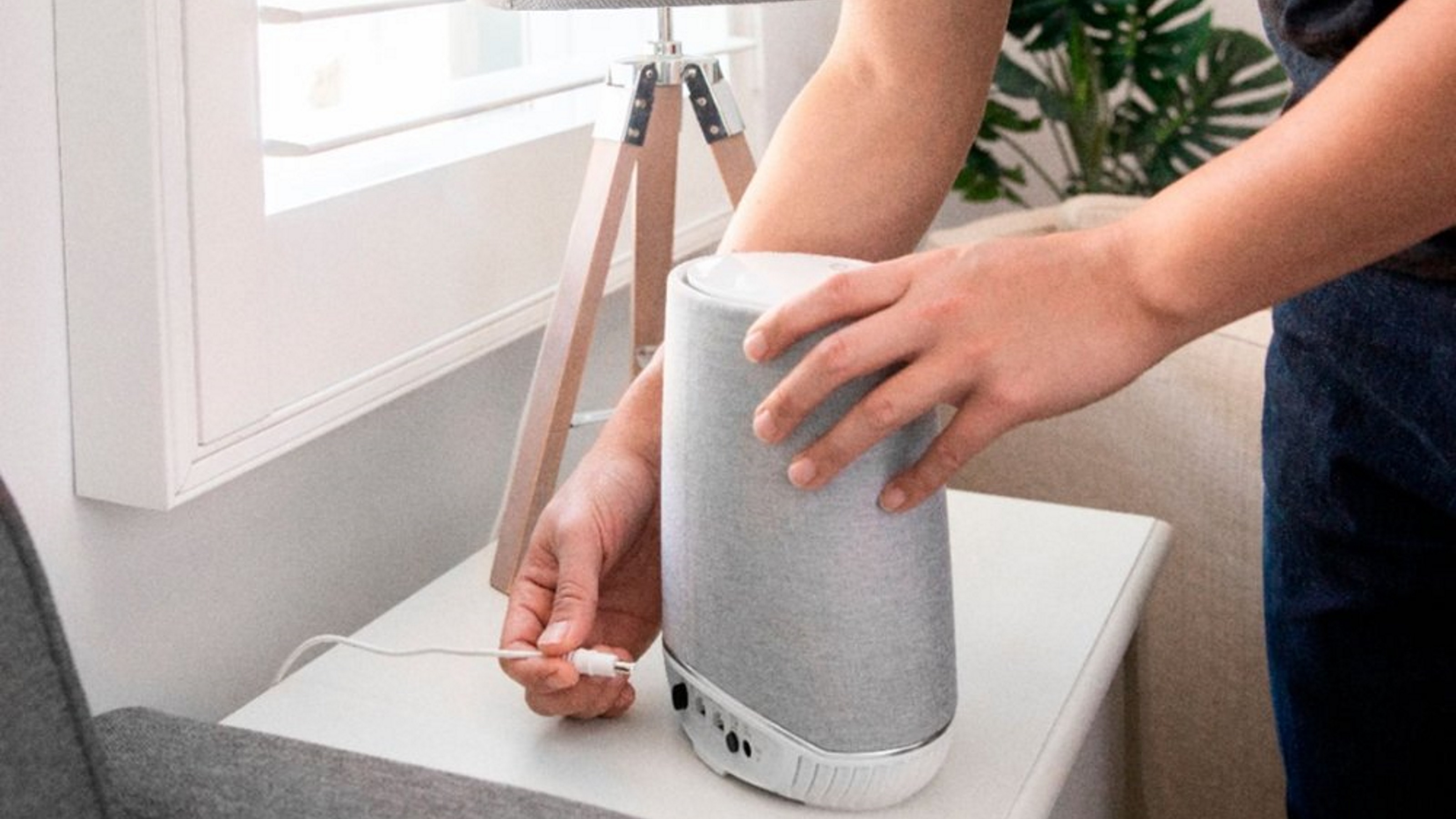What is wrong with my WiFi? Expert advice for getting back up to speed
Asking yourself 'what is wrong with my WiFi' is a common modern preoccupation. Here's how to solve those issues and be back online in no time.


Asking yourself 'what is wrong with my WiFi' is one of the most infuriating pastimes of modern life. Whether working from home or trying to stream Netflix in the evening, when the signal fails it can feel like living in the dark ages.
Sometimes, it might be that you need one of the best WiFi extenders, to get coverage to every corner. Other times there can be a simple fix you can easily manage yourself. WiFi problems are notoriously hard to diagnose and fix without access to the house with connection issues, but the advice below should give you some general pointers on how to proceed.
What is wrong with my WiFi?
1. My WiFi has suddenly stopped working
Your WiFi could suddenly stop working if your signal vanishes completely. Or your device might remain connected, but the dreaded “WiFi connected but no internet” message appears.
The difference could indicate the location of the problem (i.e: if you’re connected without internet, that suggests the bottleneck may be outside your house), but the troubleshooting steps are the same either way.
1. Restart your hardware
There’s a reason that “have you tried turning it off and on again?” is a technical support cliche: more often than not, it actually works, flushing out gremlins and returning things to working order.
If your internet is the problem, rather than a specific device (more on that in a moment), then reset the router, cable box, modem, and anything that’s responsible for bringing the internet into your home. Most will have a reset button for this, but you can just unplug the devices for 30 seconds as a catch-all alternative. Once plugged back in, wait a few minutes and see if your connection is back up and running.
2. Test multiple devices
If your laptop can’t connect, but your tablet or games console can, then that suggests there’s a problem with the laptop. Again, a simple restart might fix this (as might ‘forgetting’ the WiFi network and setting it up anew), but, if possible, it’s also worth connecting your device directly to the router with an ethernet cable to see if it’s a problem with WiFi or something else.
3. Lookout for interference
It may sound strange, but even devices that don’t use the internet can interfere with a wireless signal if they use radio waves of some kind. So if you’ve placed anything from a baby monitor to a microwave oven near your router, that could be having an impact.
4. Check for outages in your area
If a reboot doesn’t work, and nothing can connect to the internet, then it’s likely your internet provider’s problem.
Checking up on this without the internet is, of course, tricky. But if your phone has a data plan, it’s worth visiting your ISP’s website or Twitter page to see if any problems have been flagged. If all else fails, give them a call directly.
If there are no reported outages in your area and all devices are similarly affected, you may need to replace your router. Your ISP may offer to do this for you, but bluntly, the quality may be questionable, so it could be worth buying your own.
2. My WiFi signal is slow in certain rooms

If you roam the house with a laptop, you may notice a strange phenomenon: perfect internet connection in some rooms, but a lousy one in others. The usual reason for this is pretty straightforward: WiFi signal deteriorates over distance and struggles to penetrate walls, doors, and floors, especially in older homes with thicker surfaces.
If possible, try moving your router to the most central position in your house, so that each room gets an equally strong signal. This isn’t always possible, and even if it is, you may just succeed in making all rooms equally weak.
But there is an alternative: the best mesh WiFi systems.

Mesh WiFi systems provide a central router and a number of satellite nodes that can be placed strategically around your house, amplifying the signal and eliminating WiFi ‘not-spots’. As they’re all part of the same network, they share the SSID and password, meaning you can move seamlessly throughout the house without needing to reconnect.
There are a number of solutions available, but we’d recommend looking into Google’s Nest WiFi, Netgear Orbi, or if you’re on a tight budget, TP-Link Deco. If that’s still too expensive, you could consider the best WiFi dongles available for your budget.
My WiFi is slow everywhere
The first thing to check is whether you’re actually getting what you’re paying for. WiFi booster apps are a good place to start. Visit an internet speed test site like speedtest.net, and make sure the numbers definitely don’t match the broadband package you’re on. If they do, you might just need to pay more and upgrade. Ideally, do the same test via a wired connection to make sure it’s the Wifi that’s slow and not the internet connection full stop.
If your suspicions are confirmed and your WiFi is slow throughout the house, then there may be steps you can take. Knowing how to make WiFi faster can improve things without looking to upgrade your router or switch ISPs. Though, as ever, try a good old-fashioned restart before doing anything too hasty.
If you live in a crowded area — an apartment block, say — then it may be that your wireless channel is overcrowded. Certain apps for iPhone and Android can show you which channels are the most congested, so you can tinker with your router’s settings and find a clearer one. The way to do this will differ from router to router, so look up your model’s manual for instructions.
My WiFi connection drops at random times
It may sound strange, but if your internet connection drops frequently at certain times, there could be a pattern to it. This could be anything from neighbors using their internet heavily at certain times of day to your microwave having shield problems and interrupting the WiFi when in use!
If it is an issue with overuse (and the overuse isn’t coming from inside your house via a family member’s streaming or downloading habits), then you may have some joy from adjusting the WiFi channel in the router settings, as outlined in the previous section.
My WiFi fails when logging back onto my computer
This seems to be a problem specifically with Windows 10 (and possibly Windows 11) computers, due to something called “Fast Startup” which is designed to keep things running for a faster return to work.
A driver update might fix the problem, but if it doesn’t — or if your WiFi card maker hasn’t issued an update — you can disable Fast Startup by going to Control Panel > Hardware and Sound > Power Options and then selecting “Choose what the power buttons do”. From there, untick the box labeled “Turn on fast start-up”.
Be The First To Know
The Livingetc newsletters are your inside source for what’s shaping interiors now - and what’s next. Discover trend forecasts, smart style ideas, and curated shopping inspiration that brings design to life. Subscribe today and stay ahead of the curve.

Freelance contributor Alan has been writing about tech for over a decade, covering phones, drones and everything in between. Previously Deputy Editor of tech site Alphr, his words are found all over the web and in the occasional magazine too. He often writes for T3 and Tom's Guide. When not weighing up the pros and cons of the latest smartwatch, you'll probably find him tackling his ever-growing games backlog. Or, more likely, playing Spelunky for the millionth time.
-
 These Are the Flower Crowns I’m Wearing This Spring (Spoiler: They’re Actually for My Door)
These Are the Flower Crowns I’m Wearing This Spring (Spoiler: They’re Actually for My Door)Coachella confirmed the comeback of flower crowns. At home, they just go by another name: the spring wreath
By Julia Demer
-
 Bunny Ears, Be Gone — 7 Easter Table Styling Mistakes That Will Take Your Setting from Tawdry to Tasteful
Bunny Ears, Be Gone — 7 Easter Table Styling Mistakes That Will Take Your Setting from Tawdry to TastefulFrom fussy floral displays that disrupt conversation to over-relying on tacky tropes, don't fall victim to these errors when decorating your Easter table
By Lilith Hudson